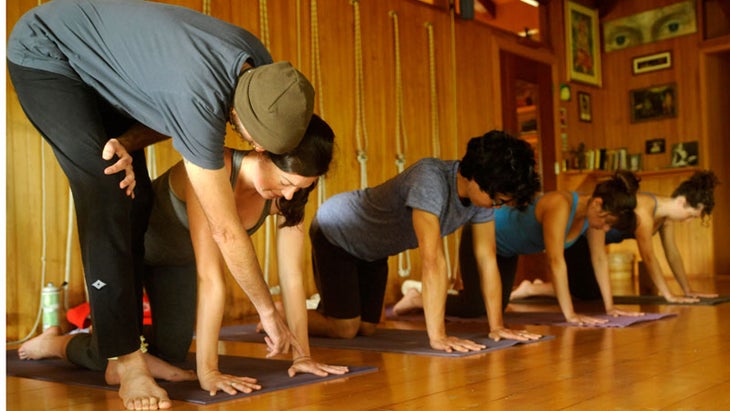Heading out the door? Read this article on the new Outside+ app available now on iOS devices for members! Download the app.

Eddie Modestini, a longtime student of K. Pattabhi Jois and B.K.S. Iyengar who leads YJ’s online course, Vinyasa 101: The Fundamentals of Flow, breaks down the 5 things you didn’t know about vinyasa yoga. (Sign up for this essential guide to vinyasa yoga HERE.)
1. It’s not about exercise.
Vinyasa yoga is literally defined as an intelligent sequence of postures, but most people equate it with the ability to sweat or “yogacize,” and that draws a lot of people to it. Vinyasa yoga is a very subtle, beautiful, introspective practice, and exercise can be a side benefit. Yoga is about getting to know yourself better and learning how to love yourself.
See also Vinyasa 101: Reasons Why You Need Vinyasa Yoga
2. It’s all about the organs.
It’s appropriate to focus on stretching and strengthening in the beginning of a vinyasa yoga practice. Once your muscles are open, the practice turns toward the joints. And once the joints are open, you can access the organs. Vinyasa yoga has so much to do with improving circulation and alleviating congestion in the organs.
See also Vinyasa 101: 3 Crucial Things to Know About the Spine
3. It’s a meditation in motion.
Meditation is focusing the mind, and vinyasa yoga focuses the mind because it gives you something to focus your mind on. It’s a dynamic meditation. Whether it’s the breath, the movement, the bandhas, or the asanas, there’s a very strong mental component to vinyasa yoga practice. Vinyasa yoga can be instrumental in stabilizing and focusing your entire life.
4. It’s a Hatha yoga breathing system.
In vinyasa yoga, the breathing is through the nose. For each movement, there is a breath. For example, if you’re lifting your arm, you don’t take two breaths to lift your arm. The rate of the breath and the rate of the movement need to be synchronized, so it’s a slow, even, smooth, inhalation and a slow, concentrated lifting of the arm. This is very difficult in the beginning and it helps focus the mind, because you really have to think about it.
See also Vinyasa 101: Is Your Yoga Class Too Fast?
5. There’s a drishti (gaze) for each pose.
There are 9 drishtis or gazing points in Hatha yoga (which are also used in vinyasa yoga), and each pose has a very specific drishti. Yoga is about listening and executing a task. Each pose has many tasks, and one of them is the drishti. Gazing in a specific direction helps to create the meditation for each pose.